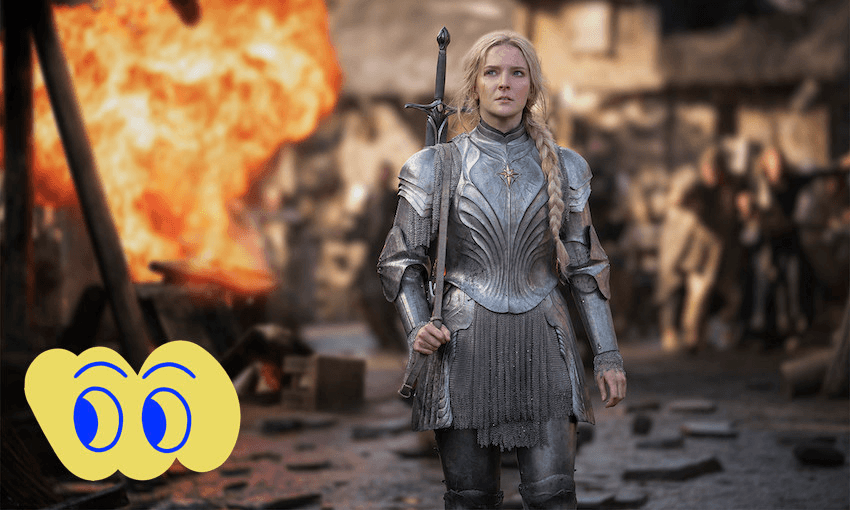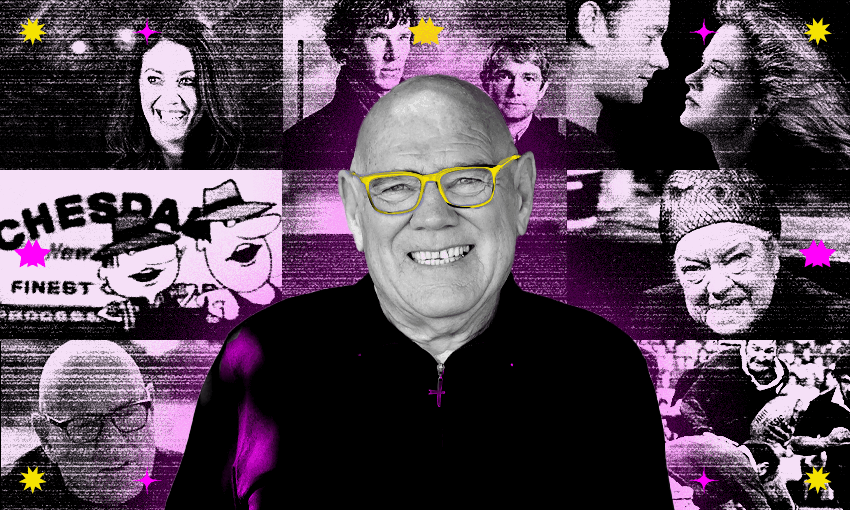A highly anticipated fantasy prequel with the fate of a streaming service riding on it? No, not House of the Dragon. It’s The Lord of the Rings: The Rings of Power. And it’s pretty good, writes Sam Brooks.
The lowdown
This is not The Lord of the Rings. This is a story told several thousand years before The Lord of the Rings, during the Second Age (Bilbo finds the One Ring in the Third Age). Do you need to know the specifics of that? Absolutely not. Just know that while a few of your faves will show up, including Galadriel and Elrond (but younger, and played by different actors), most of the characters from The Hobbit and Lord of the Rings will not be there. Adjust your hobbit-y expectations accordingly. Although The Rings of Power has multiple storylines, the major spine is that while everybody believes the war against evil, represented by Dark Lord Sauron (a real person here, not a fiery contact lens), is over, Galadriel has good reason to think it isn’t. And… it turns out she’s right!
The good
Firstly, this looks expensive.
That seems like a pretty shallow takeaway, but I say it with total admiration – this is the most expensive TV show ever made, and if it didn’t look it someone would be in trouble. The Hollywood Reporter reported last year that the first season alone cost $450m, and every single bit of that is onscreen. Whether it’s the elf settlement Lindon, with tree columns seeming to stretch for hundreds of metres into the background, or the thriving Dwarven kingdom of Moria, there’s not a single location that doesn’t look gorgeous thanks to a painterly, near-seamless blend of in-camera production design and CGI. It’s not that the series simply looks like it had money thrown at it, but that a lot of care went into the way that money was deployed.
Secondly, it feels crucially distinct from Peter Jackson’s take on the books. The main similarities are visual, which is obvious when you consider it was filmed here (did you know it was filmed here?). Jackson’s films often struggled to marry the gravitas of the overarching good vs evil story with their sillier, slapstick moments, and the end result could be awkward, especially on a rewatch circa 2022.
The Rings of Power has a much more consistent tone, helped by the clearly distinct plotlines. We know when we’re with the harfoots (basically the predecessors to hobbits), we’re in for a few jokes. When we’re with Galadriel (an endearingly spiky Morfydd Clark), we’re going to be inundated with lore. When we’re with Elrond (Robert Aramayo, of Behind Her Eyes fame), the tone lands somewhere in between. With the human men? Lots of dirty faces and grave nodding.
Delineating these separate plotlines and characters so distinctly, right from the start, helps build anticipation for the moment when they inevitably meet. It’s a structure that Game of Thrones also used, focusing intently on certain characters who might not be brought together for years into the series. We invested in them, and we also had a strong sense of who they were. And hey, if it worked for that show…. Let’s just hope that Rings of Power doesn’t fumble it when the characters do finally meet, a la Jon Snow and Daenerys Targaryen.
The not-so good
There’s nothing obvious to criticise the show for – the cast is solid, it looks great, and the writing is perfectly good. My only question is… do we really need it? The Lord of the Rings: The Rings of Power has had a whole lot of time, effort and resource thrown at it, and I can’t help but think there are other fantasy series – some that are, yes, inspired by The Lord of the Rings – that are even richer in story, more relevant to a modern audience, and more deserving of a new screen adaption.
It’s enjoyable, but it all seems sort of pointless. That’s especially so when you consider that the plug could be pulled at any point – insiders say that the fate of Amazon’s streaming service rests entirely on this series – and if so it’ll be yet another expensive, unfinished epic to add to the pile.
The verdict
Through an accident of timing and genre only, Rings of Power is pitted directly against House of the Dragon, the Game of Thrones prequel. The general narrative is that there will be one winner and one loser. This needn’t be the case! House of the Dragon is grittier and darker. Lord of the Rings: The Rings of Power takes itself seriously, but is lighter and funnier, and you sense there is some kind of happy ending awaiting you at the end (which is very much not the case in George RR Martin’s world). Both shows can succeed, and both look set to do so.
Is The Rings of Power the best thing ever? Absolutely not. But neither were the Lord of the Rings films, and neither is the source material this series is loosely adapted from (sorry, Tolkienites). But it is a delightful, really expensive looking fantasy series that, we are being told, has an actual plan for its 50 episodes. I’ll be watching, if only to see how different the UK-shot season two will look.
Lord of the Rings: The Rings of Power arrives on Amazon Prime Video on Friday, September 2, and weekly thereafter. Two episodes were watched for review.
Follow our reality TV recap podcast The Real Pod on Apple Podcasts, Spotify or your favourite podcast provider.



